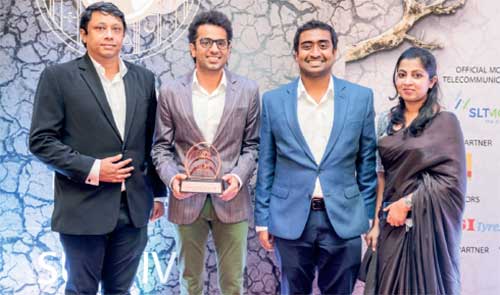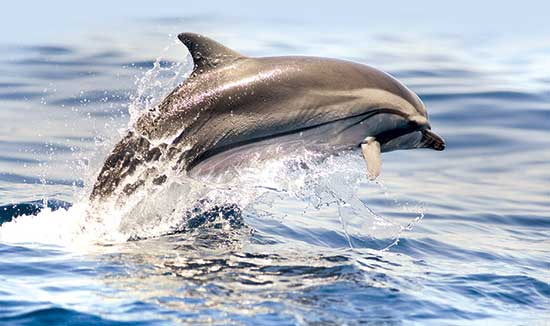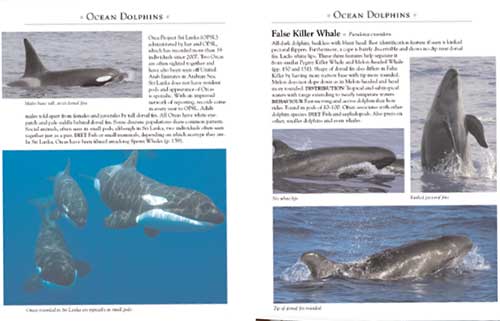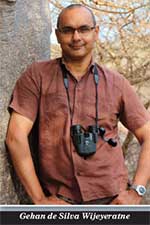Life style
From small boy to author: a Thomian’s oddysey

by Uditha Devapriya
“Farren the Wanderer”, written by Sachintha Pilapitiya and published by Neptune Publications, hit the shelves at the Book Fair on September 19
At S. Thomas’ Prep Kollupitiya, Sachintha Pilapitiya had trouble speaking in English. The problem hadn’t been his articulation or pronunciation; it had been his grammar. “Every time I opened my mouth,” he remembers, “I knew I’d trip somewhere.”
Ordinarily this would have discomfited someone, draining his or her confidence, preventing him or her from talking ever again. For Sachintha, though, the way forward seemed clear. “I resolved to speak no matter how many mistakes I made.” Having wound up as Head Prefect, he knew he had to brush up quickly. “I invariably had to speak at official functions, especially at the Assembly. So I’d go through the speeches I had written many times before I walked to the podium and delivered them.” For a while, he says, it worked.
But such a solution couldn’t last forever, and Sachintha knew that only too well. So when two of his friends – twins and batch mates – “introduced” him to the Prep School Library, he was thrilled. They would have been in Grade Three or Four then. “We discovered Enid Blyton: Famous Five, Secret Seven, and so on.”
From there they graduated to Hardy Boys, “though we didn’t move on to Nancy Drew.” When in Grade 10, he was indulging in Dan Brown, and when he offered English Literature for his O Levels, his tastes had considerably widened. By then he was poring over “serious” writers: Dickens, the Bronte sisters, and of course Shakespeare.
The Local O Level English Language paper lasts three hours, but can be completed in less than 30 minutes. At a term test Sachintha had written it in 10. That left well more than two hours to do anything he wanted in the classroom. So he reflected on the books he had read, the speeches he had made, and wrote down a story. The story was about an adventurer, an explorer, or as its author put it, a “wanderer.” It incorporated the genres he’d grown up on and grown up with, especially fantasy, sci-fi, and adventure. “I finished the basic structure in two hours. When I came back to it, I fleshed it out even more.”
That was years later. By then he had completed his A Levels, finished school, and entered university. Having added other characters and subplots, he felt ready to publish it. Through an uncle, Chamikara Pilapitiya, he met a publisher, and did just that.
Farren the Wanderer hit the Book Fair at the BMICH on September 19. While I have read the book, pored over its illustrations, and let it take back me back to a childhood spent dreaming of fantastic beasts, unrelenting explorers, charming princes, and beautiful princesses, I am less interested in its story, and how it will captivate young readers, than I am in its author, and how he grew up.
Sachintha Pilapitiya was born in Kelaniya in 2000. His father had found employment in the medical industry, while his mother worked in the IT Department at Brandix; after his sister was born two years later, she quit her job to look after them.
His parents fuelled his love for writing. From an early age his mother would tell him bedtime stories: of beasts, explorers, princes, and princesses. His father, a more practical and hands-down person, would take him and his sister out exploring, “from the north to the south and virtually everywhere in-between.” This soon brought him into contact with the immense diversity and richness of the land of his birth, a theme he has woven into all his written work thereafter. “My father put wanderlust in my blood. My mother, on the other hand, instilled a love for imagining things, for writing them down, in me.”
All that had been long, long before his education began. His first school, S. Thomas’ Prep, had contained a close-knit community, where, he remembers, differences of race and faith just melted away. “Even today, I can remember the names of almost everyone three years my junior there, and practically all the teachers and staff.”
A whole flurry of extra- and co-curricular activities, of sports and clubs, followed. In Grade Three he joined the school rugby team, and in Grade Eight he joined cadetting, two activities at which his father had excelled. While indulging in these, he straddled other pursuits as well: Cub Scouting until Grade Five, Badminton from Grade Six (winding up as the Captain), and the Interact Club from Grade Eight. Of these Cadetting had occupied him the most, and he climbed up to the post of Cadet Sergeant.
School concerts had also taken up his time. “I was always a girl: Goldilocks, Sleeping Beauty, Rapunzel, you name it,” he chortles. (I tell him that he could have fared worse; after all some of us were flowers, trees, and bushes!) “I pursued Kandyan dancing and underwent an ada ves ceremony, short of a complete ves mangalya. Given my deficiency in grammar, I began attending St Theresa’s School of Speech and Drama in Kelaniya as well.
For his O Levels, Sachintha had offered English Literature. “Not that the books we did were that interesting, though they were – R. K. Narayan’s The Vendor of Sweets, plus an anthology of poems – but I personally found the stories I discovered at the library much more fascinating.” Nevertheless he came to like his subjects, and having passed them secured a placement at S. Thomas’ College Mount Lavinia.
Sachintha entered S. Thomas’ Mount in 2017. At first, he didn’t see any difference. “It was the College version of Prep, or so I thought.” Later, however, those differences came to light, especially after his parents boarded him at the College hostel. “At Prep we had been a tight and close community: everyone knew everyone else. Here, on the other hand, it was difficult to establish contact with everyone you met.” This issue had been heightened by his parents’ decision to enrol him at the hostel, “a necessity, given that otherwise I’d have to travel to and from Kelaniya every day.”
One of the most frequent themes that run through Farren the Wanderer is the importance of understanding other communities. This came to Sachintha in his hostel years, particularly due to the people he befriended there. According to Sachintha, most of them were even less equipped with English than him. That had underlined a more glaring division: not just of language, but also of class.
“Most of those in the hostel hailed from far-off places, and nearly all of them had attended S. Thomas’ Gurutalawa or Bandarawela. They were encountering English for the first time here, in Mount. The first few days at the boarding became hard to adjust to. Once I got to befriend them well, they taught me about life. In turn I taught them English. I believe, and I hope, that I succeeded, because it was my way of repaying my debt to them.”
The crowning moment of these encounters had been an Inter-House Drama Competition in 2018. Accordingly, the boarding students who belonged to Sachintha’s House – Sachintha being the House Captain – had to jump over their linguistic handicap, since they were competing against ordinary College students “all or most of whom hailed from English speaking backgrounds and could muster only broken Sinhala.” The odds were not in their favour, clearly; everything seemed to favour their competitors.
And yet, they emerged runners-up. That had shocked everyone. For a while thereafter, the feeling persisted that, somehow, the “bounders” had triumphed.
Sachintha found the experience refreshing. “It showed not only that we could prevail, but also that we could rebel against the stereotype of us being rasthiyadukarayo, which is how many ordinary students viewed those boarded at College.” Along the way, he managed to seal his friendships with them. “Even now, I know that if I call them up, they’ll be with me and by my side. They may have been demeaned as loafers, but I know that they are much, much more sincere than those who demean them.”
I feel I’ve written too much. I’ll conclude by mentioning that Sachintha offered an unusual combination for his A Levels – Combined Maths, Literature, and Economics – and topped them so well that New York University Abu Dhabi offered him a scholarship. He plans to leave the next year, in January or February, and “to carry forward my wanderlust.” He could have added, though he didn’t, that he’ll continue to write there, as he has here: while majoring in Economics and Legal Studies, he plans to minor in Creative Writing. In those two paths, no doubt, lies the key to his future.
The writer can be reached at udakdev1@gmail.com
- News Advertiesment
See Kapruka’s top selling online shopping categories such as Toys, Grocery, Flowers, Birthday Cakes, Fruits, Chocolates, Clothing and Electronics. Also see Kapruka’s unique online services such as Money Remittence,News, Courier/Delivery, Food Delivery and over 700 top brands. Also get products from Amazon & Ebay via Kapruka Gloabal Shop into Sri Lanka.
Life style
LUXASIA aims to lead luxury beauty’s growth in Sri Lanka

Sri Lanka is a land renown for stunning natural beauty. Yet, LUXASIA still managed to usher in a different kind of beautiful to the market through its expertise in luxury beauty retail and omni-distribution.
In November 2019, LUXASIA unveiled its inaugural classy beauty counters at Odel, One Galle Face. Since then, it has brought enchanting fragrances from luxury brands such as Burberry, Calvin Klein, Gucci, and Marc Jacobs, as well as trendy skincare from KORA Organics to beauty-lovers in an exquisite and captivating retail format.
Now, having successfully overcome the challenges in 2020 imposed by COVID-19 and related lockdowns, LUXASIA is ready and excited to thrill Sri Lankan consumers again. This time, it is with the launch of both skincare and make-up collections from the prestigious Japanese beauty brand, Shiseido. Arriving with a glamorously magnificent pop-up at One Galle Face from 8 to 14 February 2020, LUXASIA promises to bring memorable consumer experiences and a feast for the eyes that showcases the best in Japanese beauty.
Leading up to this pop-up, LUXASIA partnered the Key Opinion Leaders (KOLs) and top influencers of Sri Lanka to excite the beauty community with a sneak peek of what Shiseido have to offer. This campaign garnered more than 100,000 social interactions, with over 1.2 million social media impressions, piquing consumers’ fascination in Shiseido’s award-winning and best-selling serum, The Ultimune Power Infusing Concentrate.
Looking ahead into 2021, LUXASIA aims to continue delighting consumers with even more fresh retail innovations to spice up the luxury beauty scene in Sri Lanka. Soon, fragrance enthusiasts can expect a unique pop-up of all the scents that Luxasia carry, featuring new launches from Davidoff and Calvin Klein, as well as other interesting novelties. Beauty-lovers can also expect more limited edition products and gifts-with-purchases, interesting workshops, as well as seasonal offerings in the coming months. Concurrently, LUXASIA also aspires to continue grooming the Sri Lankan beauty community through more entertaining collaborations with KOLs throughout 2021.
LUXASIA sees immense potential in Sri Lanka’s fast-growing beauty market and has been its voice in the international beauty industry. For some time now, LUXASIA has been relentlessly reaching out to numerous luxury beauty brands across to world to interest them in Sri Lanka. While it is encouraging to see the first-fruits, LUXASIA is aiming much higher. Forging ahead, LUXASIA strives to champion and lead the growth of luxury beauty in Sri Lanka, through even more partnerships with great brands, and by continuously delighting consumers.
Life style
Newly published guide opens many windows on whale watching

by Ifham Nizam
Shipping lanes to the south of Dondra pose the threat of ships colliding with whales as the area has very rich marine life which also attracts whale watching boats, says prolific wildlife writer and photographer Gehan de Silva Wijeyeratne, author of the recently published ‘A Naturalist’s Guide to the Mammals of Sri Lanka’.
He says international shipping industry organizations have written to the government to push back the existing shipping lanes and if no action is initiated, there is the danger of whale watching boats colliding with vessels.
Dr. Susannah Calderon and her colleagues at the University of Ruhuna have recommended the shipping lanes be moved 15 nautical miles south. The cost impact to all concerned will be negligible, but it significantly improves safety at sea, especially at night when the sea is dotted with the lamps from hundreds of small fishing crafts in the path of giant container carriers.
“It is primarily a safety issue though an important secondary impact will be that it reduces fatal collisions with whales, while generating favourable publicity for the government of Sri Lanka. It boils down to moving the shipping lanes further south and saving lives, Wijeyeratne stressed in an interview with The Sunday Island.
Asked what’s special about his latest publication, he said: “This is the first photographic field guide which covers nearly all of the mammals found in Sri Lanka. It covers 96 per cent of the land and marine mammals. The book, which is portable and affordable, also contains a large number of images from 40 photographers which are practically useful in the field to identify  a mammal to species level. It also covers a number of small, discrete, nocturnal mammals whose existence that even many local wildlife enthusiasts will not be aware of.”
a mammal to species level. It also covers a number of small, discrete, nocturnal mammals whose existence that even many local wildlife enthusiasts will not be aware of.”
On the book’s coverage of the marine mammals, Wijeyeratne said there are two noteworthy aspects. Firstly, it covers all the species recorded in Sri Lankan waters expect for one, the Omura’s Whale. This will be included in a second edition. Secondly, it uses images of the whales and dolphins (cetaceans) which will show the animals the way a whale watcher will see them on the surface.
Artwork that shows the whole animal is important, but in field conditions, they are often of limited value to identify cetaceans which only show a little of their upper body in sections at a time they surface.
Q: You were the first to publicize that Sri Lanka was the best location for Blue Whale sightings and offered the best chance to see a superpod of Sperm Whales. Can you explain briefly how you set about branding Sri Lanka as a top international destination for whale watching?
A:
I started with field work to ascertain the facts and launched a media campaign initially with Jetwing Eco Holidays and Jetwing Hotels which was supported over many years by the Sri Lanka Tourism Promotion Bureau (SLTPB) and others in the media and tourism business. I have published 37 articles on whale watching in Sri Lanka. The first, in May 2008, was pivotal as it boldly stated that Sri Lanka was best for Blue Whales. This set everything in motion. My articles give due credit to many people who were a part of this amazing story. This includes Dr. Charles Anderson who first told me it would be feasible to see Blue Whales from the South.
A Belgian millionaire philanthropist who prefers to remain anonymous and helped create the infrastructure for whale watching by 13 tsunami affected fishing youth who set up Mirissa Water Sports and Sue Evans who was important for connecting all of us and Anoma Alagiyawadu (the Jetwing Lighthouse Naturalist) whom I tasked with collecting the initial data for the Encounter Rates I publicized in the media.
 Remarkably, no Sri Lankan marine biologist played any role in publicizing whale watching in the early years. However, soon after, they benefited by being thrust into the media spotlight by film crew researchers who had read the publicity which began with my various widely disseminated articles. Having read them, and sometimes after conversations with me, the film crews and the press came to Sri Lanka and incorporated local marine biologists into their story.
Remarkably, no Sri Lankan marine biologist played any role in publicizing whale watching in the early years. However, soon after, they benefited by being thrust into the media spotlight by film crew researchers who had read the publicity which began with my various widely disseminated articles. Having read them, and sometimes after conversations with me, the film crews and the press came to Sri Lanka and incorporated local marine biologists into their story.
At the time I broke the first story, I do not think any of the local marine biologists had even one image of a Blue Whale of a publishable standard or had any idea that Sri Lanka was the best place in the world to see Blue Whales. Hopefully, the increased profile of local marine biologists has made it easier for them to raise the funds needed for their important research.
Q: Did the Sri Lanka Tourism Promotion Bureau help your efforts with publicity and branding?
A:
Yes indeed. At the start of the publicity campaign, we produced a series of informative and attractive publications designed by Chandrika Maelge. These were printed and distributed at key consumer and travel trade fairs such as the Bird Fair, WTM and Destinations where a number of important press and tour operators were informed about Sri Lanka being a good place for whales. At some of the press drinks events in London hosted by Jetwing Eco Holidays, around 35-45 press people would attend. These events were held in collaboration with the London Office of the SLTPB.
In some years, As many as three of these press events were held allowing personal interaction with a wide pool of media people. Another important and later development is the role played by Nalin Perera who ran the SLTPB office in London for several years and attended many consumer and travel trade fairs. I had developed media briefs for him which he would print and distribute. In one conversation, he estimated that he had printed and distributed over 10,000 copies of this material.
There were others who also disseminated my stories to the international press; a notable example being Chitral Jayatilake who shared my publicity pdfs with various wildlife documentary makers he invited to Sri Lanka.
Q: Did everyone readily embrace your ideas?
It took a couple of years. I remember even into the second year of the publicity campaign there were doubts from the big companies in tourism.
I remember Srilal Miththapala who was then President of The Hotels Association of Sri Lanka speaking to me and joining a celebrity whale watching event I was leading with Shyamalee Tudawe. This was organized by Olivia Richli of the Amangalla in Galle.
Srilal wanted to report back to the association if there was any truth to the claims being made by me about how easy it was to see Blue Whales. On the coastline, the people running small guesthouses readily embraced the story as tourists who were reading my stories turned up with copies of my articles and asked for boats to take them whale watching. The international press also readily took it on as I provided credible data.
Q: What do you say to criticisms that whale watching needs better regulation?
I agree on the need for better regulation and higher standards. The tourism industry has played its part in publicizing whale watching. Other state agencies also need to step up their efforts to regulate the industry in a way that is good for the welfare of the animals and provide a good visitor experience.
Q: What do you expect ‘A Naturalist’s Guide to the Mammals of Sri Lanka’ to achieve?
I would like people to understand that there is still a lot to be discovered about Sri Lanka’s mammals and I hope this portable and affordable guide will find its way into the hands of local naturalists and inspire more research and more practical steps to conserve habitats and species.
Life style
Modern Brides and Grooms collection by LOVI Ceylon and friends

Brides and Grooms of Sri Lanka – Reimagined
“Together we’re creating moments of happiness and cherished memories for the new couple and their families” said Founder and CEO of LOVI Ceylon, Asanka de Mel, as he introduced LOVI Ceylon’s Groom collection. Each groom’s look was paired with extraordinary creations from Sri Lanka’s top bridal designers, jewelers, florists, hair and make-up artiste and was captured by story-telling photographers.
The presentation graciously hosted by the Taj Samudra and Shangri-La hotels saw 30 leading designers working hand in hand to infuse fresh ideas, celebrate cultural diversity and show-off Sri Lankan couture—the island’s hand craft heritage.
The stunning bridal costumes were painstakingly made by renowned designers Messrs. Dhananjaya Bandara, Rishard Raheem, and Michael Wijesuriya as well as Mses. Indi Yapa Abeywardena of Brides by INDI, Sonali Dharmawardena, Darshi Keerthisena of Buddhi Batiks, Ramona Oshini, Sandani Perera of IKIGAI Bridal, and Jaish Parathalingam of Aashkii. The newcomer, Ms. Anusha David also presented her couture creations under the label Gabriel.
“We want our Groom and all of the men in the wedding including the groomsmen, dads, young boys and friends, to be themselves–to feel rooted in culture, well dressed and at ease on the wedding day,” says Asanka. Celebrating the religious and cultural traditions including Buddhist, Christian, Hindu, Kandyan, Malay, Muslim, Sinhala, Tamil and western traditions of the island LOVI Ceylon’s Grooms’ range presented modern sarongs paired with formal shirts, jackets, kurtas and more. They were paired with sarees, dresses, lehengas, pant suits and an array of breathtaking outfits. There were many looks offered for the Sri Lankan diaspora, as well as couples seeking inspiration for destination weddings.
As the designs progressed from sketch to stitching, our jewelry partners Careems, Lalitha, Mallika Hemachandra, Tiesh and Vogue jewelers added their brilliant sparkles with handcrafted fine jewelry made of precious metals encrusted with diamonds, sapphires and rubies. And what wedding would be complete without flowers? Bringing the latest floral creations were florists Designer Flowers, Flowers by Joan and Karen Forbes, Lassana Flora, and Supreme Flora who made the spectacular bridal outfits blossom with their creations.
Breathing life into these wonderful creations with superb hair and make-up was anchor of the shoot, Ms. Nadiya Fernando and her collaborator Omesh, while Ramani Fernando Salons, Shane Perera, Viran Peter, Brides by Leena and Talia designs, also worked magic on the models.
The father son duo Dinuka and Dineth Fonseka of Studio3000 took on the herculean task of capturing all the creations as the anchor photography partner. The works of Ashene Bernard, Amarante Studio, Geeshan Bandara, and Portrait Culture were also presented in imaginative and artistic captures.
De Mel expressed his thanks to the wonderful models who brought the visions and fancies of the designers to life, as well as poet and author Ashok Ferrey for being the MC of the shoot and providing an eloquent commentary, delivered with his inimitable panache!
“We have world class craftsmanship here, it’s fun to work with so many experts, who just happen to be friends, to present a beautiful collection that could nudge the course of Sri Lankan clothing identity” said Asanka when asked about the work that went into this.
As he rightly reminded the gentlemen to choose wisely, “on that special wedding day, when all eyes are on her–her eyes are on you!”









